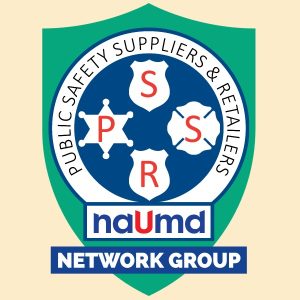When you think of uniforms, stripes and patterns probably are not the first thing that comes to mind, but they should be. These design elements are more than decoration. They are steeped in history, packed with function, and essential to branding, safety, and tradition across industries.
The roots of stripes in uniform design trace back to the 18th and 19th centuries, where military and naval uniforms set the standard. The French Navy’s iconic Breton stripe, introduced in 1858, is a prime example. Its blue and white horizontal pattern was not just stylish; it made sailors easier to spot if they fell overboard. Stripes in military and service attire often signified rank, unit, or nationality, and that practice set the tone for what would follow in industrial workwear.
As mass industrialization took hold in the 19th century, stripes transitioned from the battlefield to the factory floor. The blue-and-white pinstripe, also known as the railroad stripe, became a hallmark of America’s working class. Worn by engineers, railroad workers, and mechanics, these stripes were not just about appearance. The tight stripe pattern helped disguise dirt and grease, extending the garment’s life and keeping workers looking sharp on the job.
The connection between stripes and the automotive and oil & gas industries is hard to miss. Companies like Citgo, Chevron, and Texaco popularized bold chest stripes, shoulder bars, and contrasting yokes as part of their employee uniforms. These elements were not random. Stripes created instant brand recognition and made employees easy to identify, whether at the pump, on the road, or in the shop. Stripes evolved into a practical tool that combined marketing with function.
Safety soon became another key reason stripes flourished. As roadside and industrial work increased, visibility became critical. Enter reflective tape, high-contrast color blocking, and hi-vis striping. These patterns make workers more visible to drivers and machinery operators, reducing accidents and saving lives. Today’s police, fire, and EMS uniforms still use sleeve stripes, piping, and chevrons to signal rank and role, a practice that has become a global standard.
Modern uniform stripes and patterns serve four essential purposes:
- Branding: Bold stripes and distinctive patterns create strong corporate identity, whether in retail, service, or delivery roles.
- Visibility: Hi-vis stripes and reflective elements protect workers in hazardous environments.
- Rank and Role Indication: From chevrons to chest bars, stripes make it easy to identify authority.
- Tradition and Style: Stripes pay homage to the heritage of engineers, mechanics, and sailors, while adding a timeless design element.
And it is not just stripes anymore. Checks, ginghams, and color blocking have joined the mix, offering visual interest, stain camouflage, and alignment with brand colors. These patterns give companies more tools to blend style with function.
NAUMD members like Workwear Outfitters, with brands like Red Kap and Dickies Industrial, carry these classic and modern patterns. And the appeal is universal; all major uniform suppliers offer them because they are recognized and trusted across industries.
Stripes and patterns are more than fabric details. They are a language of workwear, one that tells the story of identity, safety, tradition, and pride. Next time you see a uniform stripe, know that it is doing more than catching your eye. It is carrying on a legacy that spans centuries.




















